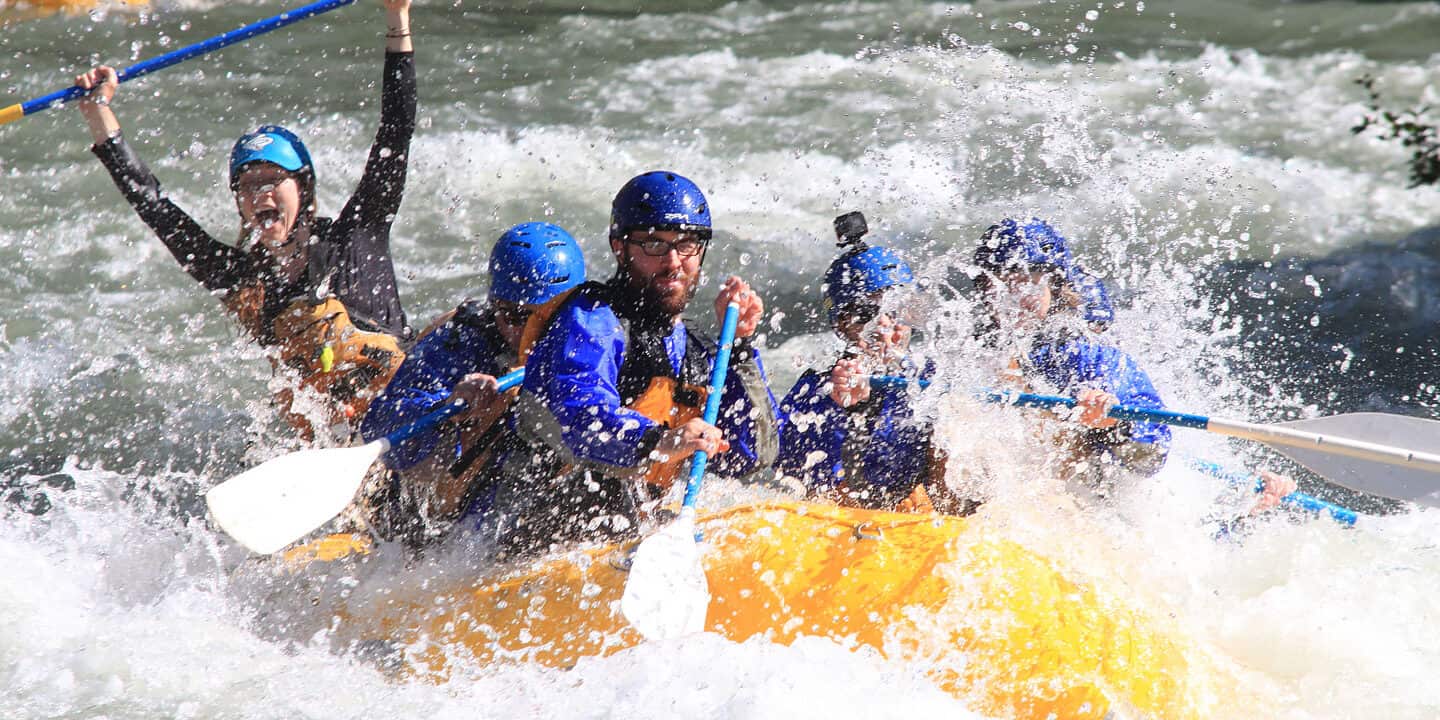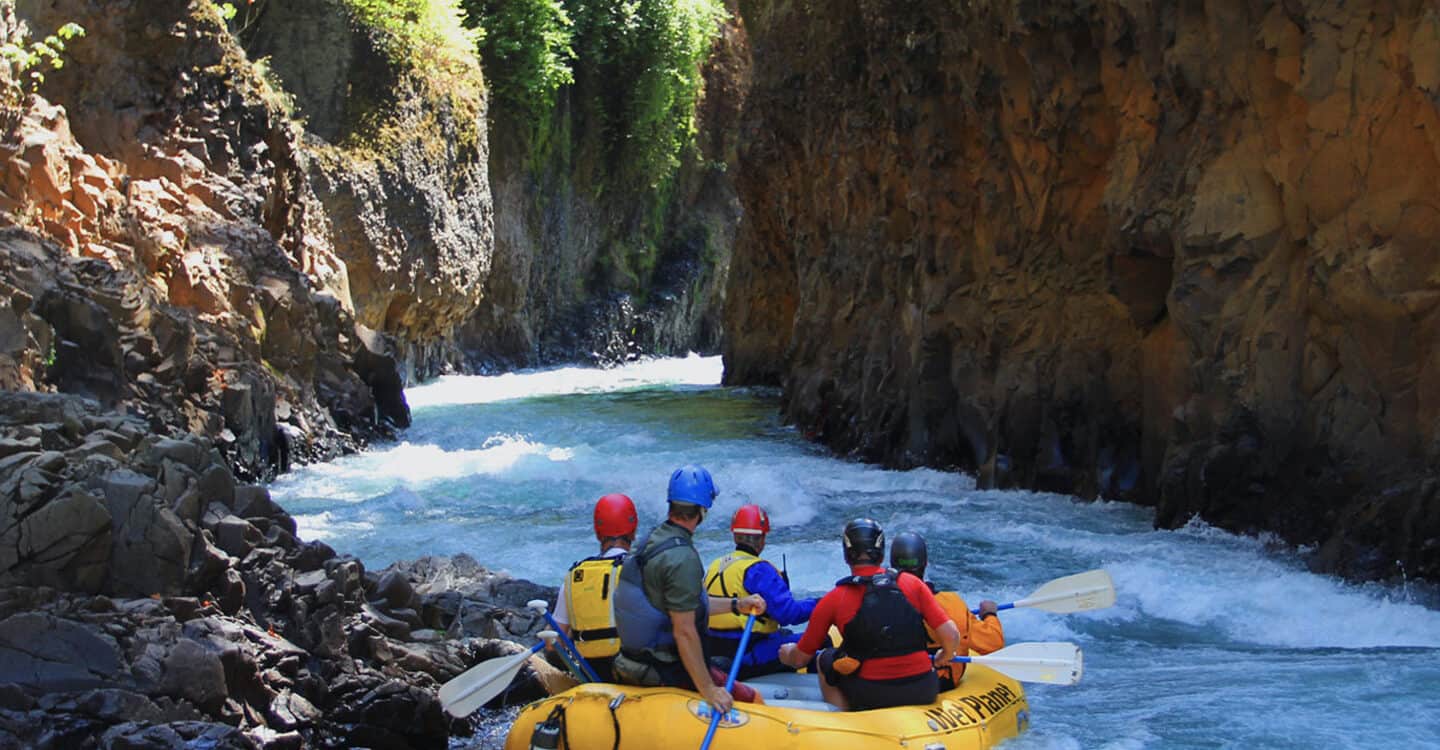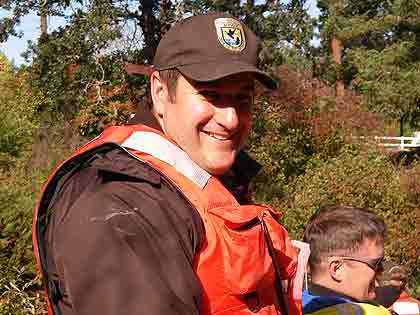
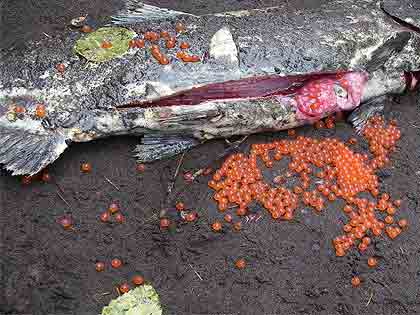
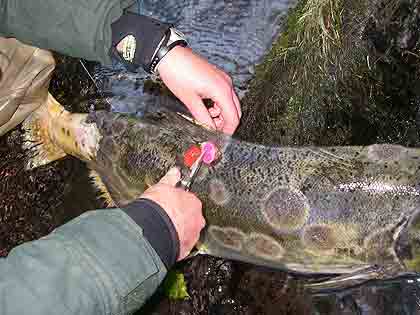
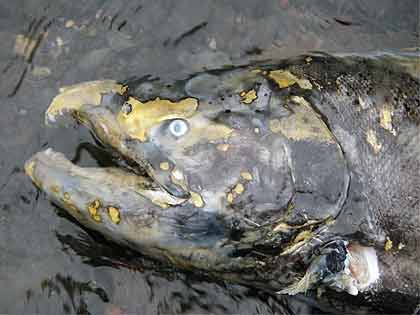
First, a little background on what’s happening… some of you may have heard that adult Chinook Salmon are being reintroduced into the upper stretches of the White Salmon river. This is the first time in nearly a century (that’s 100 years) these fish have been able to spawn above Condit dam! Wet Planet Rafting is STOKED to have recently been asked to assist in state and local government efforts to help track these tagged adult farm raised Chinook Salmon. These Salmon, all of which have been raised since birth in the Warm Springs Fish Hatchery, have been systematically reintroduced by Fish and Wildlife experts back into the White Salmon River system the past few weeks. Through this process researchers are able to track the movements and behaviors of these adult fish in an effort to begin to understand the effects of re-introduction of Wild Salmon into the upper reaches of the White Salmon River system. The 125-foot high Condit Dam has been an impassable barrier to Salmon since its construction in the early 1900’s. Condit Dam is located 3 miles directly up stream of the Columbia River…
I was lucky enough to be one of the Wet Planet guides working closely with Fish and Wildlife on this project. We put in just below Husum Falls, and slowly proceeded down river, tracking sonar in hand. The idea was to pinpoint the exact locations of each tagged fish, whether alive or dead, and when possible, get a visual conformation of the fish themselves. As we moved downstream we began to get “hits” on the locations of these tagged fish on our tracker.
Soon the raft seemed to be surrounded by huge Salmon; darting, diving and spawing all around us… it was awesome! Their instinct is to find a relatively shallow spot in the riverbed (1-3′ deep in moving current) and begin prepping the area for spawning. These powerful fish prepare the river bottom by swimming back and forth literally hundreds of times in an effort to sweep the large rocks away and create a smooth ‘nest’ in which to lay their eggs.
This ‘nest’ is commonly referred to as a “redd”. These “redds” vary in size from 3-6′ across. What an amazing demonstration of power, grace, and determination! As we proceeded down river, the fish, both alive and dead, became more numerous. Upon spotting a dead Salmon, we would pull the raft over and a biologist would quickly cut it open to in an effort to “sex’ the fish. If the fish was female, scientists layed open the belly in an effort to determine if her eggs had been deposited. In most cases the fish were “clean”… that is to say, they had laid all of their eggs. Exactly what the biologists were hoping for!
In the end it was an amazing day. A unique opportunity to see fully grown adult Chinook Salmon up close and learn about their spawning habits from a terrific group of dedicated biologists… can’t wait to get out there again!
An update on the dam… In 1999, the dam’s owners, Pacificorp, signed an agreement with more than 20 parties, including conservation groups, the Yakama Nation, government agencies and recreation groups to remove the dam. Once the dam is removed, Salmon will have access to an additional 33 miles of habitat above the current dam site. The White Salmon River will once again sustain fish runs that have not been able to reach this high quality water shed in nearly a century! Truly a watershed moment in local salmon history! (pun intended)
In addition to the enormous benefits to fish and their natural habitat, dam removal will open up 5 miles of recreational boating runs and provide for additional recreational opportunities for the local community. Approximately 25,000 boaters of all types use the river each year benefiting the local economy.
The deconstruction will take place during the winter to minimize impacts on fish. The reservoir will be drained through a tunnel excavated at the base of the dam. After the reservoir drains, the dam will be cut into pieces and hauled away. The majority of the sediment currently trapped in the reservoir will wash downstream during and shortly after dam deconstruction. Scientists agree that all of the long-term benefits of the free-flowing river will far outweigh any short-term impacts immediately following the dam removal.
Wet Planet is proud to be contributing to this historical event. I feel fortunate to work for a company that cares about our watershed, and that gives me the opportunity to personally contribute to the wellbeing and restoration of our river.
Drew Parker – Wet Planet raft guide

